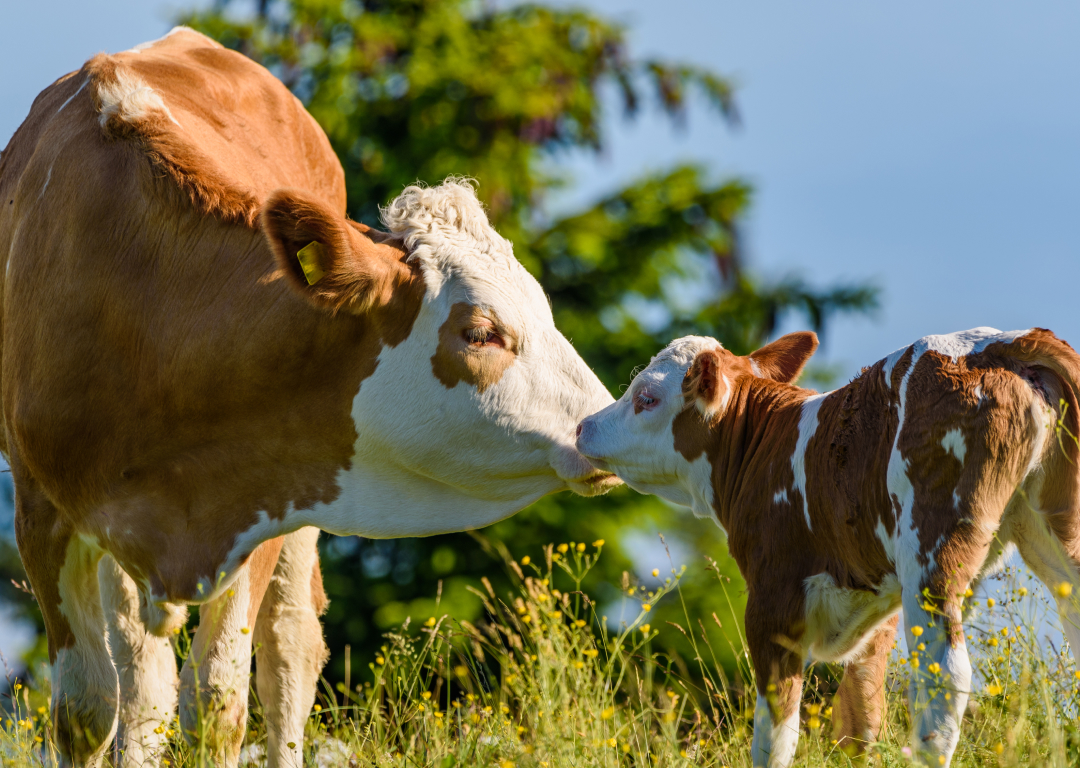Retained Foetal Membrane/RoP in Cows
Shedding of the foetal membranes/placenta is the 3rd and last stage of the parturition process. Normally, the expulsion of the foetal membrane occurs within 3–8 hours after parturition. Retention of the placenta (RoP) is defined as failure to expel foetal membranes within 12-24 hours after parturition. It occurs when the calf’s side of the placenta (the foetal membranes) fails to separate from the mother’s side of the placenta. separation of the membranes normally occurs after the calf is born. Retained foetal membranes are mostly associated with dystocia and metabolic diseases such as milk fever.
Aetiology of Retained Foetal Membranes:
Collagen links the interface between the foetal cotyledons
and the maternal caruncles of the uterus. The breakdown of
this collagen is likely a key factor in placental
separation. Both, the secretion of relaxin and the decline
of progesterone, promote collagenase activity necessary
for the separation of the foetal membranes.
Secondly, changes in the hormonal environment and maternal
recognition of foetal Major Histocompatibility Complex
(MHC) Class 1 molecules also play an important role. Apart
from this, normal placental expulsion involves a variety
of cell types, including neutrophils, T cells, and
macrophages. Therefore, impaired migration of neutrophils
to the placental interface in the periparturient period
can lead to the retention of foetal membranes. The
population of proinflammatory macrophage is found to be
less in the caruncular tissue of animals with RoP, leading
to decreased collagenolysis and fibrinolysis at the
cotyledonary-caruncular interface. Animals with RoP have
increased cortisol and decreased oestradiol concentrations
in late pregnancy, which adversely affects immune
functions in affected animals by exerting local and
systemic immunosuppressive effects.
Therefore, it can be construed that the lack of placental
detachment, rather than insufficient uterine motility, is
responsible for the retention of foetal membranes.
Risk Factors:
The following factors make dairy animals prone to
retention of foetal membranes/RoP:
1. Advancing age of the cow.
2. Hypocalcaemia.
3. Repeat Breeding.
4. Stillbirth.
5. Placentitis.
6. Premature calving or induction of parturition
prematurely.
7. Abortion (particularly with
brucellosis or mycotic abortion).
8. Twin birth.
9. Dystocia.
10. Nutritional deficiency.
11. Weak immunity/Immune
suppression.
12. Metabolic disorders, especially milk fever.
13.
Caesarean section.
14. Infectious diseases:
Brucellosis, Leptospirosis, IBR, and BVD.
Potential infection:
Often, the retained foetal membranes come out on their own
within 10 days. However, occasionally the retained
placenta can lead to serious infections. Therefore, such
animals must be kept under observation in a clean & dry
environment until they shed those membranes.
If the animal is allowed to sit in mud or manure, the
placenta can act as a wick to bring pathogens into the
uterus. The uterus can handle a local infection and clean
itself, but if the infection goes systemic, then the cow
needs to be treated symptomatically.
Furthermore, manual unhooking of the cotyledons from the
caruncles can damage the uterus by destroying some of the
attachment sites permanently leading to future pregnancy
issues such as abortions, premature and stillbirths. Thus,
it’s wise to allow the animals to clean themselves so that
the placental debris comes out along with the lochia
discharge.
Clinical Symptoms:
The retention of foetal membranes is characterized by
varying amounts of degenerating, discoloured, and fetid
membranes protruding from the vulva for more than 24 hours
after parturition. Sometimes, the retained foetal
membranes remain inside the uterus and are not visible
from the outside. In such a case, the RoP may be confirmed
by a foul-smelling discharge. In most cases, there are no
clinical signs of systemic illness. When systemic clinical
signs are present, they are related to toxaemia.
Diagnosis of Retained Foetal Membranes:
The RoP in a dairy animal can be diagnosed based on
history and clinical signs of the foetal membranes
protruding from the vulva. Foetal membranes retained
within the uterus or projecting into the cervix or vagina
can be detected on vaginal examination.
Treatment of Retained Foetal Membranes:
Manual removal of the placenta is no longer recommended
and is potentially harmful. Instead, the excess foetal
membranes protruding out of the vulva can be trimmed to
avoid contamination of the farm and entry of pathogens
inside the uterus due to the wick action of the protruding
membranes. Untreated cows expel the membranes in 2–11 days
with up to 40% of them requiring no treatment at all. An
ecbolic preparation with other associated gynecological
benefits can be used to hasten the lochial discharge.
Routine use of intrauterine preparations can be avoided
unless the case turns into a metritis or pyometra case.
The use of oxytocin, oestradiol, PGF2-α, and oral calcium
preparations can be helpful in the expulsion of the
placenta or prevention of complications. When systemic
clinical signs of illness appear, systemic treatment with
antimicrobials such as ceftiofur injections is indicated
due to its wide spectrum of efficacy.
Prevention of Retained Foetal Membranes in Dairy Herds:
In herds with an unacceptably high incidence of RoP,
supplementation with vitamin E and selenium is beneficial.
A good mineral mixture supplementation and managing the
risk factors mentioned above will be useful in reducing
the incidence of retained foetal membrane cases in dairy
animals. The use of a suitable anionic mixture preparation
around the periparturient period will be useful in
risk-prone dairy animals.
Products: FiNGeR + Nexfur

